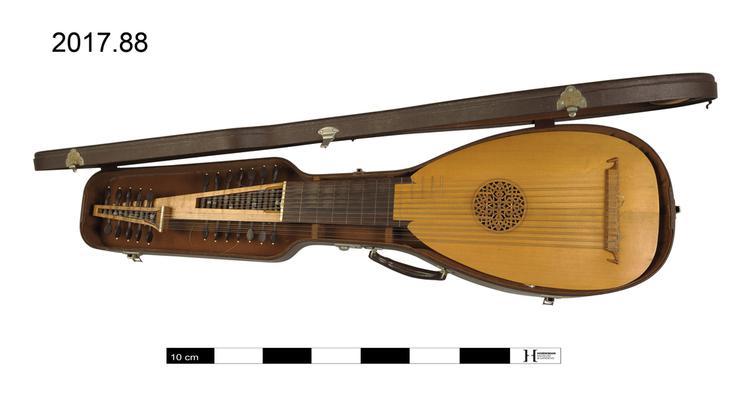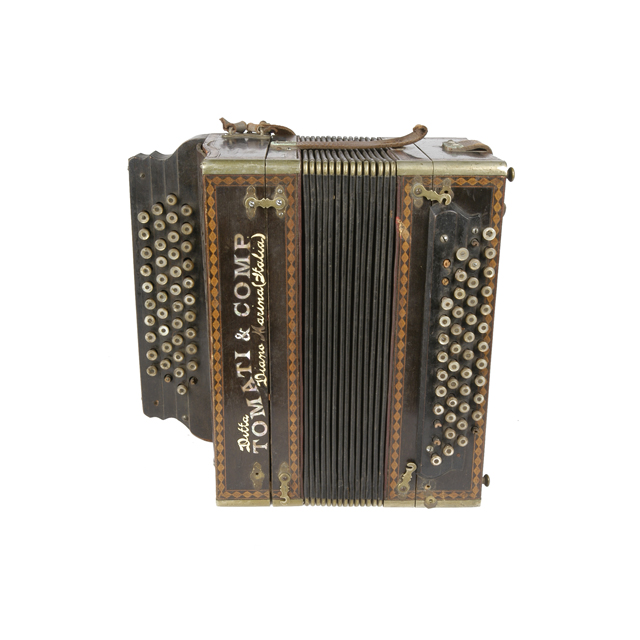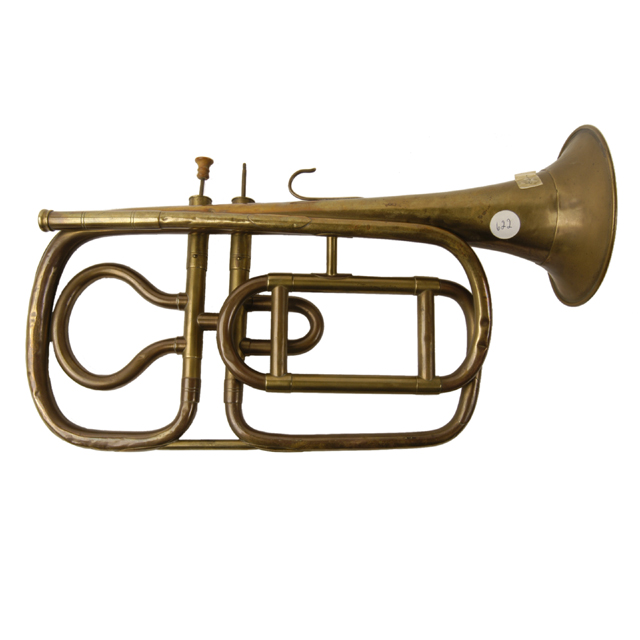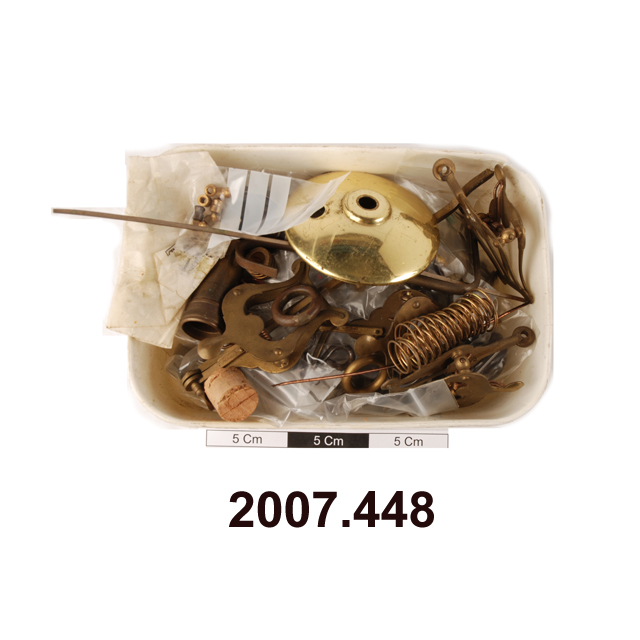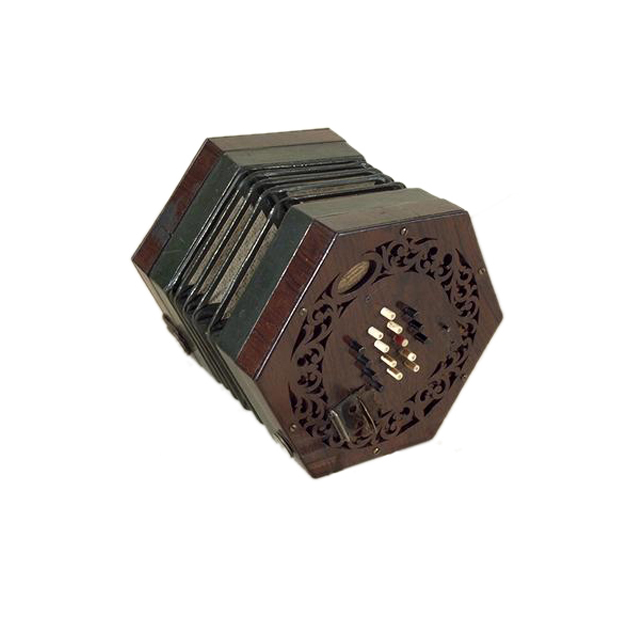
English system. Serial number 254. Oval paper label glued to pine backing: 'By His Majesty's Letters Patent, C. Wheatstone, Inventor, 20 Conduit St., Regent St., London'. 5.75" diameter flat rosewood ends, with thickish simple fretwork, flush to action and with pine backing. The end plate is flush to the action frame, and inset into it on an inner cradle. Serial number is stamped on pine board between left-hand frets. 32 ivory buttons, 16 each side: red Cs, stamped white naturals, black accidentals. Remnants of RH strap, probably original left-hand green leather strap, with nickel strap screws. The finger rests are absent, but markings and screw positions show that they were of straight form. Ends are of 'action flush to bellows frames' format, in common with all concertinas made after this date, but the end plates are still fitted flush to the action frame. Four-fold leather bellows, with faintly embossed papers having a gold pattern seen only on this instrument. The bellows frame has an inner shelf which supports the reed pan. Square-ended reed beds with nickel reed tongues stamped with note-names, but with only pencilled note-names on the pan. A one-piece chamois gasket covers the reed pan dividers, which have no cross pieces, and the pan itself has no central hole. The action has complex solid brass levers and solid turned brass pallets, with blued-steel leaf springs mounted onto the levers, screwed pivots, and with the ivory keys mounted in slots on the ends of the levers. There is an early dealer's label on the underside of the left-hand action board reading 'H Journet, 3 Grand Parade, Croydon'. Journet later traded as an instrument dealer from Tottenham Court Road, London, and his label appears on many other makers' concertinas.



